- Accueil
- Pages cachées
- 21 JANVIER 2024 NEWS
21 JANVIER 2024 NEWS
INSTITUT SUPERIEUR D'ANTHROPOLOGIE
INSTITUTE OF ANTHROPOLOGY
ONLINE COURSES / COURS A DISTANCE
INSCRIPTIONS OUVERTES
REGISTER NOW
ITALIE – 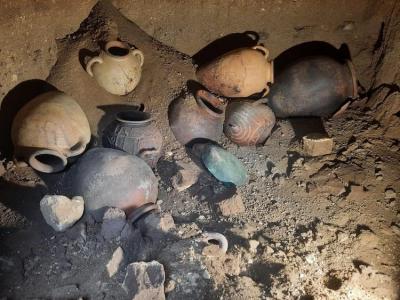 Montalto di Castro - Recently, a 2,600-year-old Etruscan tomb was opened 100 miles northwest of Rome, revealing many ancient treasures. The unveiling was shared by the municipality of Montalto di Castro in late October 2023. A group gathered outside the site at Vulci—which used to be a wealthy Etruscan city—to watch the opening of the tomb. Numerous amphorae with traces of wine from Greece were found strewn inside, as well as other ceramics and pottery, utensils, and iron objects. The collection of artifacts were found in near perfect condition, including a ritual tablecloth. Due to the number of belongings recovered from the inside of the tomb, archaeologists believe that the tomb was made for a wealthy Etruscan family.
Montalto di Castro - Recently, a 2,600-year-old Etruscan tomb was opened 100 miles northwest of Rome, revealing many ancient treasures. The unveiling was shared by the municipality of Montalto di Castro in late October 2023. A group gathered outside the site at Vulci—which used to be a wealthy Etruscan city—to watch the opening of the tomb. Numerous amphorae with traces of wine from Greece were found strewn inside, as well as other ceramics and pottery, utensils, and iron objects. The collection of artifacts were found in near perfect condition, including a ritual tablecloth. Due to the number of belongings recovered from the inside of the tomb, archaeologists believe that the tomb was made for a wealthy Etruscan family.
https://mymodernmet.com/2600-year-old-etruscan-tomb-uncovered-in-italy/
TURQUIE – 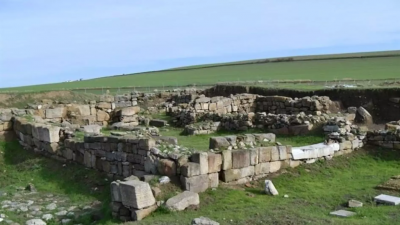 Heraion Teikhos - Archaeologists have unearthed a “pharmaceutical production area” supported by a water source during ongoing excavations in the Thracian Ancient City Heraion Teikhos, in the northwestern province of Tekirdağ. In recent years, scientific data revealed by archaeological excavations prove that the city has been inhabited from third millennium B.C.E. to XIII century. Century A.D. The city lived its most brilliant periods from 5Th century B.C.. to 1st century A.D. In 2021, a team of researchers from Istanbul Rumeli University unearthed a 2,800-year-old temple in Türkiye’s ancient Thracian city of Heraion Teikhos. Now, a water system has been identified leading to a space within the temple that researchers call an “ancient pharmaceutical production area.” Atik stated that the aim of the excavations is to identify pharmaceutical production areas, the size of which is not yet known, and how the water was transported. “Water systems in hilltop settlements were usually built with large water cisterns in ancient times. The 2023 excavations at the Heraion Teikhos settlement yielded findings indicating that water was transported not from cisterns but from an area a few kilometers to the east of the excavation site, which is still wooded today. In addition to this, a new pharmaceutical was unearthed in the west of the settlement. Terracotta pipes connecting the pools and stone channels also revealed that there was a pharmaceutical production area spread over the entire excavation area,” Atik said. “The fact that the medicine ovens and the clean water system and pools required for medicine making were located close to each other in the same areas is scientifically important since it is the first time they have been identified archaeologically,” she concluded. The Thracians were a group of tribes renowned for their rich culture and formidable warriors, that thrived in Southeast Europe from as early as 2000-1500 BC. They were a group of tribes who occupied the southeastern part of the Balkan Peninsula.
Heraion Teikhos - Archaeologists have unearthed a “pharmaceutical production area” supported by a water source during ongoing excavations in the Thracian Ancient City Heraion Teikhos, in the northwestern province of Tekirdağ. In recent years, scientific data revealed by archaeological excavations prove that the city has been inhabited from third millennium B.C.E. to XIII century. Century A.D. The city lived its most brilliant periods from 5Th century B.C.. to 1st century A.D. In 2021, a team of researchers from Istanbul Rumeli University unearthed a 2,800-year-old temple in Türkiye’s ancient Thracian city of Heraion Teikhos. Now, a water system has been identified leading to a space within the temple that researchers call an “ancient pharmaceutical production area.” Atik stated that the aim of the excavations is to identify pharmaceutical production areas, the size of which is not yet known, and how the water was transported. “Water systems in hilltop settlements were usually built with large water cisterns in ancient times. The 2023 excavations at the Heraion Teikhos settlement yielded findings indicating that water was transported not from cisterns but from an area a few kilometers to the east of the excavation site, which is still wooded today. In addition to this, a new pharmaceutical was unearthed in the west of the settlement. Terracotta pipes connecting the pools and stone channels also revealed that there was a pharmaceutical production area spread over the entire excavation area,” Atik said. “The fact that the medicine ovens and the clean water system and pools required for medicine making were located close to each other in the same areas is scientifically important since it is the first time they have been identified archaeologically,” she concluded. The Thracians were a group of tribes renowned for their rich culture and formidable warriors, that thrived in Southeast Europe from as early as 2000-1500 BC. They were a group of tribes who occupied the southeastern part of the Balkan Peninsula.
ANGLETERRE –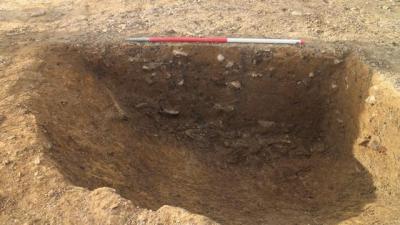 Ravensthorpe - Archaeological discoveries in Ravensthorpe have revealed a possible historic small settlement dating back to Roman times, with environmental samples being processed in order to learn the full extent of findings. For the Transpennine Route Upgrade (TRU) team, groundworks are an essential step in the delivery of upgrades across the route. In certain areas, such work means archaeological fieldwork is necessary in order to identify, understand and safeguard heritage assets that may be affected. With TRU upgrades being carried out in West Yorkshire, archaeologists from Oxford Archaeology North took to multiple sites on our route in between Huddersfield and Dewsbury. Excavations at Heaton Lodge and Thornhill Lees Farm produced more commonly found, industrial post-medieval archaeology in the form of earthworks and other minor finds, with no significant remains. It was the works in Ravensthorpe, though, that uncovered some archaeological mysteries. Following initial work, further investigation of the site was required after the discovery of a large, irregularly shaped cropmark that was thought to be of a prehistoric date.;Last April saw a geophysical survey undertaken, which suggested that this feature was most probably an Iron Age or Romano-British enclosure, with it being hexagonal in shape and including internal penannular features. An archaeological evaluation identified that the enclosure was fairly substantial in size, and was therefore subject to a strip, map and record towards the end of the year. Despite there being limited artefactual remains; a collection of Romano-British ceramics, ceramic building materials, flint, glass and animal bones were all recovered at the site. Catherine O’Doherty, Site Supervisor, said: “We have a possible small-scale settlement with round house-like features and boundary ditches which yielded limited finds of a Roman date. This is interesting as sites such as this are limited in West Yorkshire, making this site an exciting discovery.” Environmental samples collected at the site are now being processed for the recovery of further artefacts and ecofacts – this is seen as a key step in potentially being able to date the evidence and assist in developing the general understanding around the purpose the enclosure once served.https://www.networkrailmediacentre.co.uk/news/mysterious-site-on-transpennine-route-leaves-archaeologists-digging-for-answers
Ravensthorpe - Archaeological discoveries in Ravensthorpe have revealed a possible historic small settlement dating back to Roman times, with environmental samples being processed in order to learn the full extent of findings. For the Transpennine Route Upgrade (TRU) team, groundworks are an essential step in the delivery of upgrades across the route. In certain areas, such work means archaeological fieldwork is necessary in order to identify, understand and safeguard heritage assets that may be affected. With TRU upgrades being carried out in West Yorkshire, archaeologists from Oxford Archaeology North took to multiple sites on our route in between Huddersfield and Dewsbury. Excavations at Heaton Lodge and Thornhill Lees Farm produced more commonly found, industrial post-medieval archaeology in the form of earthworks and other minor finds, with no significant remains. It was the works in Ravensthorpe, though, that uncovered some archaeological mysteries. Following initial work, further investigation of the site was required after the discovery of a large, irregularly shaped cropmark that was thought to be of a prehistoric date.;Last April saw a geophysical survey undertaken, which suggested that this feature was most probably an Iron Age or Romano-British enclosure, with it being hexagonal in shape and including internal penannular features. An archaeological evaluation identified that the enclosure was fairly substantial in size, and was therefore subject to a strip, map and record towards the end of the year. Despite there being limited artefactual remains; a collection of Romano-British ceramics, ceramic building materials, flint, glass and animal bones were all recovered at the site. Catherine O’Doherty, Site Supervisor, said: “We have a possible small-scale settlement with round house-like features and boundary ditches which yielded limited finds of a Roman date. This is interesting as sites such as this are limited in West Yorkshire, making this site an exciting discovery.” Environmental samples collected at the site are now being processed for the recovery of further artefacts and ecofacts – this is seen as a key step in potentially being able to date the evidence and assist in developing the general understanding around the purpose the enclosure once served.https://www.networkrailmediacentre.co.uk/news/mysterious-site-on-transpennine-route-leaves-archaeologists-digging-for-answers
ANGLETERRE – 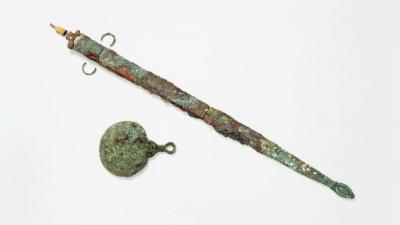
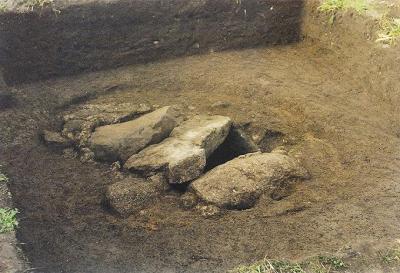 Bryher - A mysterious 2,000-year-old grave in England might have held a warrior woman. That’s the conclusion of a new study of the remains. They were found on an island off the country’s southwest coast.;In 1999, a farmer stumbled upon the burial while plowing a field on England’s Bryher Island. The grave held a jumble of human tooth and bone fragments. It also contained a sword, shield and bronze mirror, among other items.;That combo of items has puzzled researchers. Swords are typically found in male burials from that region. Mirrors often show up in female burials. No other known western European grave from this time period has held both. So researchers were unsure whether the grave’s occupant was male or female. Biologist Simon Mays studies human bones. He works with Historic England. This group in Portsmouth protects and studies historical sites. Mays and his colleagues were able to extract bits of protein from tooth enamel from the remains. The bits came from a protein made by a gene found on both X and Y chromosomes. The protein forms found are linked to a gene on the X chromosome. None of the types from a Y chromosome turned up. That allowed the team to classify the mystery remains as female. The wear on her teeth suggests she died in her early twenties. The island grave dates to between roughly 100 B.C. and 50 B.C. That’s based on previous radiocarbon dating of a partial bone. The metal objects found in the burial also point to this period, known as the Late Iron Age. Back then, communities often fought each other. And growing evidence has been suggesting that ancient women, not just men, could be warriors. The woman from this grave may have fought in raids and helped fend off enemy attacks, Mays’ team suggests.These researchers shared their findings in the December Journal of Archaeological Science: Reports One possible use of the mirror was to reflect sunlight, the researchers say. Such beams of light could have served as signals to people on nearby islands and boats. Perhaps the Bryher woman used it to help plan raids or defenses. Still, the remains show no signs of fighting. So the sword and mirror could have been heirlooms. Or mourners may have placed the items in the grave to show loyalty to the woman’s family, the researchers say.
Bryher - A mysterious 2,000-year-old grave in England might have held a warrior woman. That’s the conclusion of a new study of the remains. They were found on an island off the country’s southwest coast.;In 1999, a farmer stumbled upon the burial while plowing a field on England’s Bryher Island. The grave held a jumble of human tooth and bone fragments. It also contained a sword, shield and bronze mirror, among other items.;That combo of items has puzzled researchers. Swords are typically found in male burials from that region. Mirrors often show up in female burials. No other known western European grave from this time period has held both. So researchers were unsure whether the grave’s occupant was male or female. Biologist Simon Mays studies human bones. He works with Historic England. This group in Portsmouth protects and studies historical sites. Mays and his colleagues were able to extract bits of protein from tooth enamel from the remains. The bits came from a protein made by a gene found on both X and Y chromosomes. The protein forms found are linked to a gene on the X chromosome. None of the types from a Y chromosome turned up. That allowed the team to classify the mystery remains as female. The wear on her teeth suggests she died in her early twenties. The island grave dates to between roughly 100 B.C. and 50 B.C. That’s based on previous radiocarbon dating of a partial bone. The metal objects found in the burial also point to this period, known as the Late Iron Age. Back then, communities often fought each other. And growing evidence has been suggesting that ancient women, not just men, could be warriors. The woman from this grave may have fought in raids and helped fend off enemy attacks, Mays’ team suggests.These researchers shared their findings in the December Journal of Archaeological Science: Reports One possible use of the mirror was to reflect sunlight, the researchers say. Such beams of light could have served as signals to people on nearby islands and boats. Perhaps the Bryher woman used it to help plan raids or defenses. Still, the remains show no signs of fighting. So the sword and mirror could have been heirlooms. Or mourners may have placed the items in the grave to show loyalty to the woman’s family, the researchers say.
https://www.snexplores.org/article/archaeology-woman-warrior-iron-age-grave-sword-mirror
MEXIQUE – 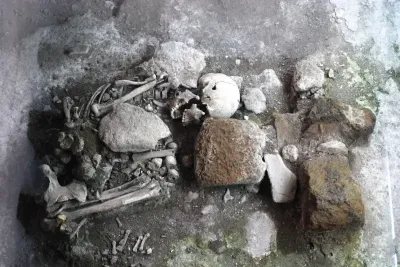 Mexico - New research has revealed a grave historical error at Palacio de Cortés in Mexico. It was long assumed that a skeleton on display at the palace was that of a Spanish monk – but a new analysis has shown that it actually likely belonged to an Aztec woman. Palacio de Cortés in the city of Cuernavaca was damaged by the deadly Puebla earthquake in September 2017, sparking a renovation project to restore the building to its former glory. During the restoration work, anthropologists from Mexico’s National Institute of Anthropology and History (INAH) took a fresh look at the supposed monk buried in the palace. While most believed the body belonged to a Spanish “man of the cloth” named Juan Leyva, the identity of this person was never certain. The label that has been accompanying the remains for almost 50 years reads as so: “Burial found in situ of a man with deformed vertebrae. Traditionally it is stated that it may be the monk Juan Leyva, who served the Marchioness Doña Juana de Zúñiga de Arellano, wife of Hernán Cortés and resident of this palace, however, due to the type of posture it may be an indigenous burial.” To settle the mystery once and for all, INAH researchers launched a detailed archeological analysis of the remains and its setting. Wear-and-tear on their teeth indicates the person was 30 and 40 years old when they died. Despite their “deformed vertebrae”, they found no evidence of disease in the skeleton, leaving it uncertain how the person died. Based on the size of their humerus (an upper arm bone), the researchers suggest they were around 147 centimeters (under 4 foot 10 inches) tall. The wider shape of the pelvis also clearly shows that the skeleton was feminine. Crucially, the study suggests the body dates to an era spanning 1450 to 1500 CE. Since European colonizers did not arrive in modern-day Mexico until 1511 CE, we can safely assume this is not the body of a Spanish man. Instead, the researchers argue that the people belonged to a pre-Hispanic group, most likely the Tlahuica people of Central Mexico. The Palace of Cortés was only constructed by the Spanish in the 1520s, so it appears the structure was built around this pre-existing grave from a previous era. “It is more related to a pre-Hispanic burial, which could belong to the contact period or earlier,” Jorge Angulo, an archaeologist with the INAH, said in a statement. He added that the previous theory didn’t make sense because it was very strange “that a clergyman was buried outside his community, even more so that his burial system was not associated with the Catholic canons of the time.” In light of this work, the archaeological display has recently been reopened with a new certificate, which states that the burial belonged to a “Tlahuica Woman.”
Mexico - New research has revealed a grave historical error at Palacio de Cortés in Mexico. It was long assumed that a skeleton on display at the palace was that of a Spanish monk – but a new analysis has shown that it actually likely belonged to an Aztec woman. Palacio de Cortés in the city of Cuernavaca was damaged by the deadly Puebla earthquake in September 2017, sparking a renovation project to restore the building to its former glory. During the restoration work, anthropologists from Mexico’s National Institute of Anthropology and History (INAH) took a fresh look at the supposed monk buried in the palace. While most believed the body belonged to a Spanish “man of the cloth” named Juan Leyva, the identity of this person was never certain. The label that has been accompanying the remains for almost 50 years reads as so: “Burial found in situ of a man with deformed vertebrae. Traditionally it is stated that it may be the monk Juan Leyva, who served the Marchioness Doña Juana de Zúñiga de Arellano, wife of Hernán Cortés and resident of this palace, however, due to the type of posture it may be an indigenous burial.” To settle the mystery once and for all, INAH researchers launched a detailed archeological analysis of the remains and its setting. Wear-and-tear on their teeth indicates the person was 30 and 40 years old when they died. Despite their “deformed vertebrae”, they found no evidence of disease in the skeleton, leaving it uncertain how the person died. Based on the size of their humerus (an upper arm bone), the researchers suggest they were around 147 centimeters (under 4 foot 10 inches) tall. The wider shape of the pelvis also clearly shows that the skeleton was feminine. Crucially, the study suggests the body dates to an era spanning 1450 to 1500 CE. Since European colonizers did not arrive in modern-day Mexico until 1511 CE, we can safely assume this is not the body of a Spanish man. Instead, the researchers argue that the people belonged to a pre-Hispanic group, most likely the Tlahuica people of Central Mexico. The Palace of Cortés was only constructed by the Spanish in the 1520s, so it appears the structure was built around this pre-existing grave from a previous era. “It is more related to a pre-Hispanic burial, which could belong to the contact period or earlier,” Jorge Angulo, an archaeologist with the INAH, said in a statement. He added that the previous theory didn’t make sense because it was very strange “that a clergyman was buried outside his community, even more so that his burial system was not associated with the Catholic canons of the time.” In light of this work, the archaeological display has recently been reopened with a new certificate, which states that the burial belonged to a “Tlahuica Woman.”
https://www.iflscience.com/skeleton-of-spanish-monk-turns-out-to-be-an-aztec-woman-72529
CHINE - Yecheng - Archaeologists have discovered an ancient battlefield dating back to the Southern and Northern Dynasties (420-589) at the Yecheng historic site in north China's Hebei Province, according to the Yecheng archaeological team. Located in the city of Handan, the Yecheng historic site comprises two interconnected ancient city ruins and was once the capital of several ancient dynasties. Many ancient military artifacts, including armor and weapons, were unearthed during the excavation of the former moat outside the Zhuming Gate of the southern city ruins. Additionally, the remains of a bridge, including a brick-built load-bearing wall and evenly spaced pillar holes, were found. "This excavation has provided a preliminary understanding of the layout and structure of the moat and bridge, while providing new materials for researching the ceremonies and warfare centered around the gate," said Shen Lihua, associate researcher at the Institute of Archaeology, Chinese Academy of Social Sciences. According to Shen, who is responsible for the excavation, the moat runs roughly parallel to the direction of the city wall. At the central axis of the gate, the water channel of the moat is slightly narrower, and the riverbank is steeper. A large amount of armor, bricks, tiles and ceramic fragments were unearthed from the sediment in the ancient moat.
https://english.news.cn/20240119/3ecc6369a0c742bdbc4388425b61235d/c.html
INDE – 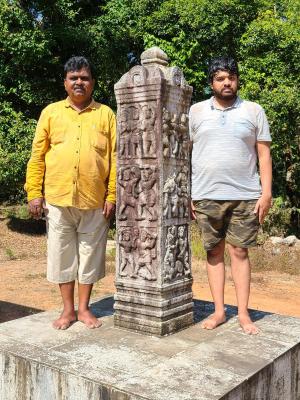 Chitteri - Archaeologist T. Murugeshi found a unique Veera Sthambha (pillar dedicated to a hero) at Chitteri in Ulturu Mudabettu village of Kundapura taluk in Udupi district of Karnataka, .on January 18. According to Mr. Murugeshi, a Veera Sthambha is a rare type of hero-stone found across India. The pillar is located in front of Nandikeshwara temple at Chitteri. The Veera Sthambha is 6 feet tall and has four faces. Each face has three panels of 2 feet length with war scenes. The panels depict heroes equipped with swords and other sharp weapons attacking enemies riding horses and elephants. Sword-fighting, horse-fighting, an apsara (angel) taking a hero to heaven are also depicted. Erection of Veera Kallu (hero stone) was a common practice, but erection of a pillar was rare, Mr. Murugeshi said. A hero’s life journey through different wars till his end was depicted vividly in the Veera Sthambha found in Chitteri. The pillar indicated his higher rank as compared to a common soldier. Worshipped as the Kshetrapala (guardian) by the local people, the Veera Sthambha dates back to the 14th century.
Chitteri - Archaeologist T. Murugeshi found a unique Veera Sthambha (pillar dedicated to a hero) at Chitteri in Ulturu Mudabettu village of Kundapura taluk in Udupi district of Karnataka, .on January 18. According to Mr. Murugeshi, a Veera Sthambha is a rare type of hero-stone found across India. The pillar is located in front of Nandikeshwara temple at Chitteri. The Veera Sthambha is 6 feet tall and has four faces. Each face has three panels of 2 feet length with war scenes. The panels depict heroes equipped with swords and other sharp weapons attacking enemies riding horses and elephants. Sword-fighting, horse-fighting, an apsara (angel) taking a hero to heaven are also depicted. Erection of Veera Kallu (hero stone) was a common practice, but erection of a pillar was rare, Mr. Murugeshi said. A hero’s life journey through different wars till his end was depicted vividly in the Veera Sthambha found in Chitteri. The pillar indicated his higher rank as compared to a common soldier. Worshipped as the Kshetrapala (guardian) by the local people, the Veera Sthambha dates back to the 14th century.
UKRAINE – 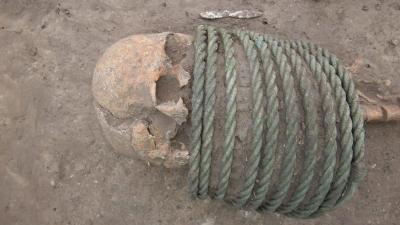 Ostriv - Archaeologists discovered the remains of men buried with weapons such as axes, spearheads, and swords, and women buried with thick twisted bronze neck rings in an 11th-century cemetery near the village of Ostriv, south of Kiev. In 2017, the Ukrainian Institute of Archaeology conducted an expedition that discovered the Ostriv graveyard. Between 2017 and 2022, excavations uncovered 107 inhumation burials from the late 10th and 11th centuries. The graves’ uniqueness was quickly apparent. Unlike the unusual funerary practices of the Kyivan Rus during this period, the graves were facing south and west rather than north. The deceased were laid in supine position (on their backs), with outstretched limbs. In most of the graves, there were remnants of wooden coffins. The remains of funerary food offerings (chicken bones and eggshells) were discovered in the graves and in wooden buckets at the feet of some of the deceased. Some people were buried with extremely valuable items, including slate spindle whorls, jewelry such as bronze neck rings and bracelets, pennanular brooches, cast bronze belt rings, cowrie shell bead necklaces, and weapons such as battle axes, knives, and spearheads. Though the comparison was not exact, the orientation and funerary furnishings bore a strong resemblance to the practices of tribes in the Western Baltic. Most remarkably, none of the Ostriv graves were cremation burials; the Western Baltic peoples generally burned their dead. Furthermore, Baltic funeral customs do not generally involve buckets. Archaeologists hypothesize that these key differences may be attributed to restrictions placed on traditional funerary practices by the Christian dukes of Kyiv, primarily Volodymyr the Great (r. 980-1015) and Yaroslav the Wise (r. 1019-1054), and by the process of Christianization of the Baltic settlers of the region during the 11th century. A stone altar found in the cemetery could have been used for Christian or pagan rituals, or a mixture of the two. Research continued at the site until 2022 but the excavation has been paused due to the Russian invasion of Ukraine.
Ostriv - Archaeologists discovered the remains of men buried with weapons such as axes, spearheads, and swords, and women buried with thick twisted bronze neck rings in an 11th-century cemetery near the village of Ostriv, south of Kiev. In 2017, the Ukrainian Institute of Archaeology conducted an expedition that discovered the Ostriv graveyard. Between 2017 and 2022, excavations uncovered 107 inhumation burials from the late 10th and 11th centuries. The graves’ uniqueness was quickly apparent. Unlike the unusual funerary practices of the Kyivan Rus during this period, the graves were facing south and west rather than north. The deceased were laid in supine position (on their backs), with outstretched limbs. In most of the graves, there were remnants of wooden coffins. The remains of funerary food offerings (chicken bones and eggshells) were discovered in the graves and in wooden buckets at the feet of some of the deceased. Some people were buried with extremely valuable items, including slate spindle whorls, jewelry such as bronze neck rings and bracelets, pennanular brooches, cast bronze belt rings, cowrie shell bead necklaces, and weapons such as battle axes, knives, and spearheads. Though the comparison was not exact, the orientation and funerary furnishings bore a strong resemblance to the practices of tribes in the Western Baltic. Most remarkably, none of the Ostriv graves were cremation burials; the Western Baltic peoples generally burned their dead. Furthermore, Baltic funeral customs do not generally involve buckets. Archaeologists hypothesize that these key differences may be attributed to restrictions placed on traditional funerary practices by the Christian dukes of Kyiv, primarily Volodymyr the Great (r. 980-1015) and Yaroslav the Wise (r. 1019-1054), and by the process of Christianization of the Baltic settlers of the region during the 11th century. A stone altar found in the cemetery could have been used for Christian or pagan rituals, or a mixture of the two. Research continued at the site until 2022 but the excavation has been paused due to the Russian invasion of Ukraine.
CHINE – Jinyang - Yesterday, on January 19th, the Shanxi Jinyang Ancient City Archaeological Museum opened its doors to the public, unveiling a remarkable exhibit from over 1,300 years ago. The exhibit features a Tang Dynasty brick mural tomb, with characters displaying gestures resembling the “scissor hands” popularly used in modern-day photos. The highlight of the newly opened Jinyang Ancient City Archaeological Museum is the Guo Xing Tomb, showcasing a stunning display of well-preserved murals. Discovered in 2019, the tomb belongs to Guo Xing, a military general who once served under Emperor Taizong Li Shimin of the Tang Dynasty. The tomb, which also serves as the final resting place for Guo Xing’s wife, is adorned with intricate murals on its walls, top, The murals, depicting characters with index and middle finger gestures resembling “scissor hands,” have captured the attention of many visitors. Pei Jingrong, Director of the Taiyuan Institute of Cultural Relics and Archeology, acknowledges the fascination with the “scissor hands” gesture, noting that its significance remains a mystery in the academic world. The exhibition of the Guo Xing Tomb’s murals offers a rare glimpse into the artistic and cultural practices of the Tang Dynasty, shedding light on ancient customs and traditions, while also raising intriguing questions about the meaning behind the enigmatic “scissor hands” gestures depicted in the ancient artwork.
